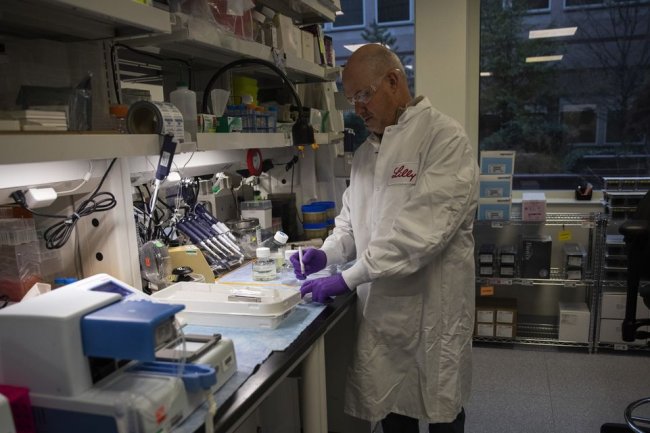What to read about Argentina
image: Bridgeman ImagesARGENTINA WILL vote on November 19th in a run-off election to decide whether Sergio Massa, the Peronist economy minister, or Javier Milei, a self-described “anarcho-capitalist”, will become its next president. This polarising election comes against a troubled background. Inflation is heading for 200% this year and 40% of Argentines live in poverty. And yet, thanks largely to the fertility of the vast pampas, Argentina was in 1914 one of the ten richest countries in the world measured by income per person (although this was very unequally distributed). The past 70 years or so have been decades of decline and political conflict, interrupted by shorter periods of growth and stability. For most of that time the country has been ruled by Peronism, the amorphous populist movement founded by Juan and Eva Perón that is woven deeply into the social fabric. Yet Argentina, whose population is mainly descended from immigrants from Europe, especially Italy and Spain, is also


ARGENTINA WILL vote on November 19th in a run-off election to decide whether Sergio Massa, the Peronist economy minister, or Javier Milei, a self-described “anarcho-capitalist”, will become its next president. This polarising election comes against a troubled background. Inflation is heading for 200% this year and 40% of Argentines live in poverty. And yet, thanks largely to the fertility of the vast pampas, Argentina was in 1914 one of the ten richest countries in the world measured by income per person (although this was very unequally distributed). The past 70 years or so have been decades of decline and political conflict, interrupted by shorter periods of growth and stability. For most of that time the country has been ruled by Peronism, the amorphous populist movement founded by Juan and Eva Perón that is woven deeply into the social fabric. Yet Argentina, whose population is mainly descended from immigrants from Europe, especially Italy and Spain, is also a country of immense creative prowess. Jorge Luis Borges, who wrote poems and short stories involving metaphysical riddles, was one of the 20th century’s greatest writers, though he wrote little about his native country. From the music of the tango to film and football Argentina has made its mark in the world. Its intellectual classes, still scarred by a brutal military dictatorship and urban guerrilla war in the 1970s, are prone to brooding self-analysis—not for nothing does Buenos Aires have more psychoanalysts per person than any other big city in the world. The following books, one of which is for readers of Spanish, offer a window onto this country of paradoxes.
The Invention of Argentina. By Nicolas Shumway. University of California Press; 352 pages; $33.95 and £29
This masterly intellectual and cultural history focuses on the 19th-century roots of Argentine nationalism and what Nicolas Shumway, now an emeritus professor at Rice University in Houston, Texas, calls its “guiding fictions”. His argument is that “this ideological legacy is in some sense a mythology of exclusion rather than a unifying national ideal, a recipe for divisiveness rather than consensual pluralism.” That legacy has shaped the past 100 years and lurks beneath the social conflicts, between rich and poor, capital and interior, that have marked the country’s long decline.
Argentina 1516-1987: From Spanish Colonisation to Alfonsín. By David Rock. University of California Press; 576 pages; $36.95 and £21.99
This standard account by one of the leading historians of Argentina is particularly good on the formation of the modern nation-state, the settlement of the pampas, the divide between sophisticated Buenos Aires and the more backward interior and on the rise and apogee of Perón, who first became Argentina’s president in 1946. Although it stops towards the beginning of the current democratic period, David Rock’s fluent narrative remains a useful source of reference.
A State of Fear: Memories of Argentina’s Nightmare. By Andrew Graham-Yooll. Eland Books; 168 pages; $37 and £13.99
Andrew Graham-Yooll was the news editor of the Buenos Aires Herald, an English-language daily that was one of the few newspapers to try to report the truth during Argentina’s nightmarish descent into internecine war between left- and right-wing Peronists in the 1970s and into military dictatorship, which lasted from 1976 to 1983. His book is a vivid memoir of those years, of gunmen cruising the streets of Buenos Aires in Ford Falcons, of disappearances and murders. The author was summoned to a clandestine press conference by the Montoneros, a guerrilla outfit that had kidnapped Jorge and Juan Born, two of Argentina’s richest men. Later Graham-Yooll would have the frightening obligation of giving evidence at the trial of Mario Firmenich, the Montonero leader.
Santa Evita. By Tomás Eloy Martínez. Knopf; 384 pages; $17. Transworld Publishers; £16.99
The central character in this novel is a corpse, that of Eva Perón. After the armed forces overthrew Juan Perón’s government in 1955, they worried that the embalmed body of Eva, his second wife, who had died of cancer in 1952 at the age of just 33, would become a rallying point for supporters of the exiled populist leader. So they kidnapped it and spirited it abroad. Tomás Eloy Martínez, a journalist and novelist who (like Graham-Yooll), left Argentina to escape death threats from members of the security forces in the 1970s, blends fact with fiction in recounting the adventures of the corpse, which today rests in Recoleta cemetery in Buenos Aires. In doing so he reveals the cult of political necrophilia that is so prevalent in Latin America, the quasi-religious devotion that is such a powerful strand in Peronism and the paranoia at the heart of “anti-Peronism”. “Santa Evita” is a companion to the earlier “The Perón Novel”, published in 1988, in which Eloy Martínez used the same technique to write the biography of the towering Argentine figure. “Nothing is true; at the same time everything is true,” he said of these works.
In Patagonia. By Bruce Chatwin. Penguin; 240 pages; $14.99. Vintage; £10.99
In this beautifully written travelogue Bruce Chatwin, a British writer, journeys through the byways of Argentine history and society on his way from Buenos Aires to the far south. He encounters naturalists and the descendants of Welsh settlers, follows the trail of Butch Cassidy, an American outlaw, and comes upon dinosaur fossils as well as recounting the exploits of a seafaring relative. Critics carped that “In Patagonia”, published in 1977, may be partly fictionalised. That may be true, but it is a thoroughly enjoyable read.
Fever Dream. By Samanta Schweblin. Translated by Megan McDowell. Penguin; 192 pages; $17. Oneworld Publications; £8.99
Samanta Schweblin belongs to a cohort of women, including Mariana Enríquez and Claudia Piñeiro, who are at the forefront of Argentina’s literary world. It is no coincidence that all of them write fiction in various shades of noir. “Fever Dream”, which was shortlisted for the Man Booker International Prize in 2017, is a slim, taut novella of psychological horror. The narrator is a young woman dying in a hospital bed who is interrogated by a young boy. She conjures up a world of fear and madness, of mothers’ fears for their children, set against a backdrop of soyabean monoculture and contaminating agrochemicals. “Fever Dream” is hard to put down.
El Nudo: Por qué el conurbano bonaerense modela la política argentina. By Carlos Pagni. Planeta; 776 pages; $52
Argentina’s financial and economic collapse in 2001 hastened the transformation of a society that had considered itself to be European into a fully Latin American one, with a large informal economy, widespread poverty and political clientelism (the exchange of votes for benefits). The crucible of that change was the sprawling post-industrial urban belt surrounding Buenos Aires, known as the conurbano, which is home to nearly 30% of Argentina’s population. In “El Nudo” (“The Knot”, which is not yet available in English), Carlos Pagni, one of Argentina’s leading journalists, tells the story of the conurbano through a mixture of history, sociology and reportage. It forms the political base of Cristina Fernández de Kirchner, the leftist-populist Peronist who dominated Argentine politics for much of the past 20 years. Whereas Juan Perón offered “the inclusion of the workers”, Ms Fernández conducts “the management of poverty”, according to Mr Pagni. That is carried out through subsidies that the government cannot afford. It constitutes the “knot” that ties Argentina to underdevelopment.
Also try:
No one can deny that Mr Milei, whatever his shortcomings, is an interesting character. Our sister magazine 1843 profiled the presidential candidate. Here is our account of our interview with him. In this leader The Economist laments that the alternative to the radical libertarian in the second round of the presidential election is the Peronist Mr Massa. Our Bello columnist imagined in 2020 how Argentina’s current president, Alberto Fernández, would explain Peronism to Angela Merkel, then Germany’s chancellor. This special report on Argentina, from 2004, was written at a time of hope for a country that “achieved development and then lost it again”. In “Forgotten Continent: A History of the New Latin America” Michael Reid, our former Bello columnist, writes about Argentina and much else.
What's Your Reaction?













